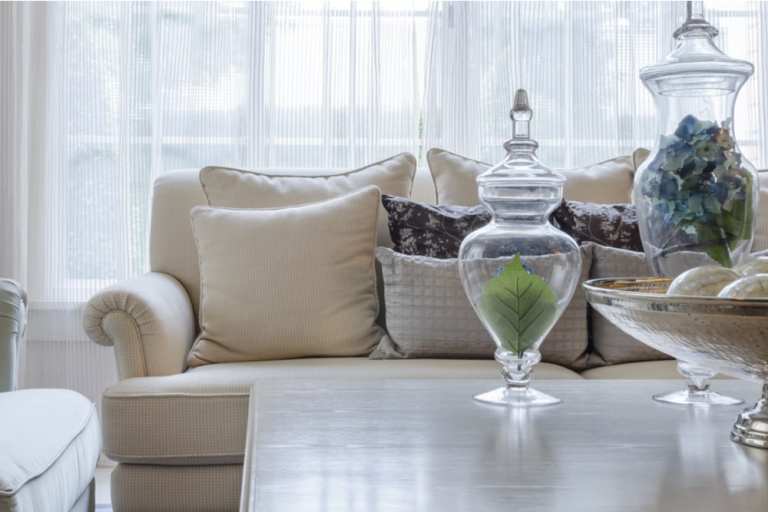How Chairish Helped Its Marketplace Sellers Stay Open — And Recover

The year was off to a flying start for Chairish CEO Gregg Brockway.
He said he felt good about the state of the high-end home decor market and his place in what was a rapidly growing eCommerce segment. In January and February, sales were in line with expectations, and good things were about to unfold. Then came March.
“It was a really challenging, scary, crazy time,” he told PYMNTS CEO Karen Webster. “And, you know, since then we adjusted, and I think what I’ve taken away is that the most important thing is that you have to get through it, whatever it takes, whatever sacrifice, changes, accommodations you need to make, you have to make sure you have the wherewithal to cross the chasm, and then good things do happen again. I think now the fact that people have to spend a majority of their time cooped up in their house and having to make accommodations to make it a comfortable place to hunker down — that has been a real positive for the whole home design category.”
And good things are happening again for a business that bills itself as “the design world’s indispensable marketplace for exceptional home furnishings and art.”
That description doesn’t quite capture the selection of business model for the company, which curates and sells a wide variety of home and office goods that run the design gamut from vintage art posters to retro furniture to modern art lighting designs to Ralph Lauren leather couches. It’s the anti-IKEA.
Perhaps the best way to describe the “crossing the chasm” comment Brockway made is to look at the company’s main business model adjustment as the pandemic hit its highest gear in late March. Home design, especially furniture, depends on in-person trade shows. The biggest one happens every year in High Point, North Carolina.
When the pandemic canceled the High Point show, Brockway and his team stepped in. Chairish hosted two events for the design community. The first was an editorial feature on The Dealers of High Point, featuring the inventory of the High Point dealer community and an avenue to give designers access to goods normally exhibited at the show. The second was the first ever Chairish Virtual Spring Preview that enabled leading brands to virtually present their lines to the Chairish community of 25,000 interior design professionals through a web-based editorial series, along with presentations to its more than 500,000 Instagram followers. Participating brands were required to then sell their items on Chairish.
“Designers are finding that their business is evolving even faster than retailers,” Brockway said. “We were seeing more and more designers wanting to present products in a visual way, not just in a web page with a lot of items on it, but present in a room setting and actually doing a full rendering of projects. So, we’ve been helping to support that. But now it’s much harder for people to meet in person and certainly to walk any client through a showroom, figuring out how to engage and interact with their clients. And doing that in a more digital fashion has become really, really important. Yes, there are things that we can do to help with that, but we’re excited to do some of the things which we were already starting to do so a designer can put together a collection.”
One of the main value propositions for Chairish is fulfillment. Its inventory can range from a huge framed vintage tourist railroad poster to a sofa and back to a ribbon glass side table. Because the company doesn’t have to deal with warehouses (it ships from the designer to the consumer), it has navigated the pandemic-driven world of unpredictable shipping.
“On some levels, what we do looks really easy, but it’s hard,” Brockway said. “We’re dealing with higher value, fragile items. And so, we need to take extra special care that we don’t have issues. And then when they do happen, because unfortunately they do occasionally happen, we have to get involved and make it right. That’s what comes with being a trusted marketplace, which is what we always want people to feel comfortable and satisfied both on the buy side and the sell side. It means trying to figure it out and be fair to all parties. And I think where folks who have worked with us, they appreciate that. And to the people that are new, I think we want to communicate that.”
For the remainder of the year, Brockway, like most CEOs, said he is trying to plan in the face of maximum unpredictability. He pays attention to housing market data as a key indicator and other sustained trends in the luxury market, which has been uneven as the recovery continues. He’s most concerned with trying to case the volatility of the demand side of his business.
“We’ve been through three or four annual planning processes here in the last 45 to 60 days,” he said. “Initially, the issue was finishing the existing projects that we have and getting the other ones back on track. Now, we’ve shifted to getting our new projects moving forward. The projections are still a little mixed, but I think broader macro-economic positive trends will support our business.”